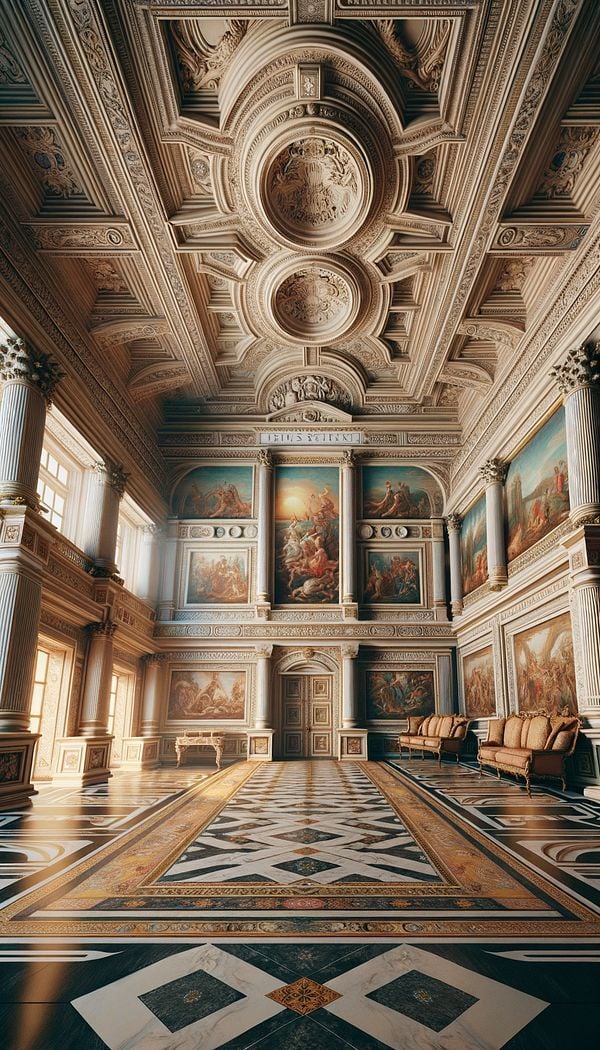What is Italian Renaissance?
Italian Renaissance refers to the revival of classical art and architecture originating in Italy in the 14th century.
Description
The Italian Renaissance signifies a period of rebirth and transformation in the arts, architecture, and culture, which first emerged in Italy during the late 14th century and lasted until the early 17th century. It marked a departure from the medieval Gothic style, emphasizing instead a return to the beauty, symmetry, and order of classical antiquity. The movement saw the rediscovery of ancient Greek and Roman texts, leading to innovations in science, literature, and philosophy, as well as in visual arts and architecture.
In the realm of interior design, the Italian Renaissance influenced the development of symmetry, proportion, and harmony within spatial layouts. Architects and designers of the time, such as Filippo Brunelleschi and Leon Battista Alberti, emphasized the importance of balance and order, drawing inspiration from the architectural principles of ancient Rome. Interiors were richly decorated with frescoes, trompe l'oeil, and elaborate tile work, and furnished with intricately carved furniture, sumptuous textiles, and ornamentation inspired by classical mythology and flora and fauna motifs.
The legacy of the Italian Renaissance continues to inspire contemporary interior design, informing principles of balance, harmony, and sophistication in both residential and commercial spaces. The style is characterized by its use of classical design elements, luxurious materials, and a cohesive integration of art, architecture, and décor to create aesthetically pleasing and functional spaces.
Usage
In contemporary interior design, Italian Renaissance can be seen in homes and buildings that embrace classical architectural details such as columns, pediments, and arches. Spaces designed in this style often feature high ceilings, detailed moldings, and frescoed walls. Furniture in an Italian Renaissance-inspired room may include pieces like ornate cabinets, carved tables, and chairs with rich upholstery. Lighting fixtures are typically grand, echoing the style's emphasis on luxury and detail. This style is chosen for spaces where an air of elegance, historical depth, and architectural beauty is desired.
FAQs
-
How does the Italian Renaissance differ from the Baroque style?
The Italian Renaissance emphasizes symmetry, harmony, and proportion inspired by classical antiquity, focusing on balance and restraint in design. In contrast, the Baroque style, which followed the Renaissance, is known for its extravagance, dramatic use of light and shadow, and copious ornamentation, aiming for a sense of awe and emotional engagement.
-
Can Italian Renaissance features be incorporated into modern homes?
Yes, features of the Italian Renaissance can be integrated into modern homes, often through selective use of architectural detailing, materials, and furniture. Incorporating elements like classical columns, coffered ceilings, frescoes, or antique furniture can imbue spaces with Renaissance elegance while still blending with contemporary aesthetics.
-
What are the key elements of Italian Renaissance interior design?
Key elements include classical architectural details (columns, pediments, arches), high ceilings, symmetrical layouts, frescoed walls or ceilings, detailed moldings, intricately carved furniture, luxurious textiles, and ornamentation inspired by classical mythology.
Practical Application
When integrating Italian Renaissance features into contemporary spaces, it's important to balance historical elements with modern functionality. Choose one or two standout Renaissance-inspired pieces or design details to serve as focal points, ensuring they harmonize with the overall design of your space. Utilizing modern materials and technology can help adapt traditional designs for today's living standards, allowing for a fusion of eras that is both beautiful and livable.
-
Architectural Elements199 articles
-
Design Styles478 articles
-
Furniture Types599 articles
-
Decorative Techniques322 articles
-
Historical Periods & Movements150 articles
-
Wall SculptureA wall sculpture is a three-dimensional artwork designed to be mounted on a wall.
-
SemainierA Semainier is a tall, narrow chest of drawers, typically with seven drawers.
-
UpscaleUpscale refers to high-end or luxury aspects in interior design.
-
PressboardPressboard is a type of engineered wood product made from wood fibers bonded together under heat and pressure.
-
RattanRattan is a natural, renewable material often used in furniture and decor.
